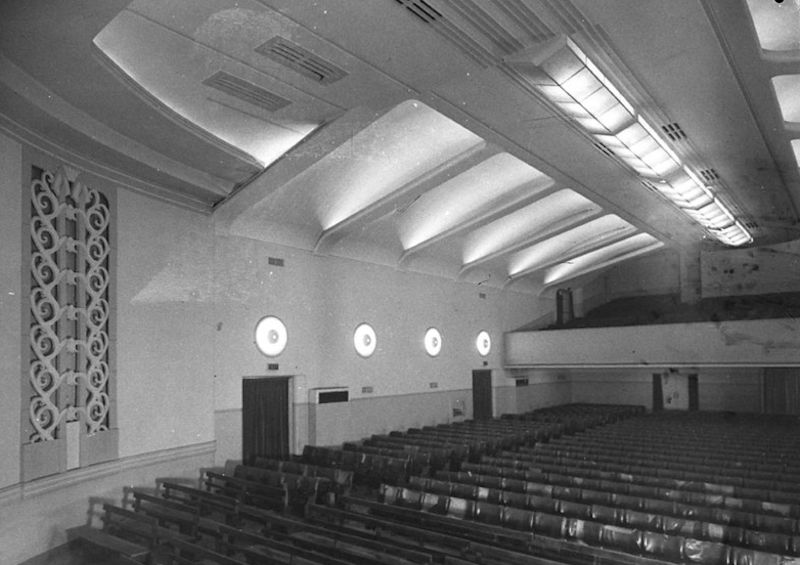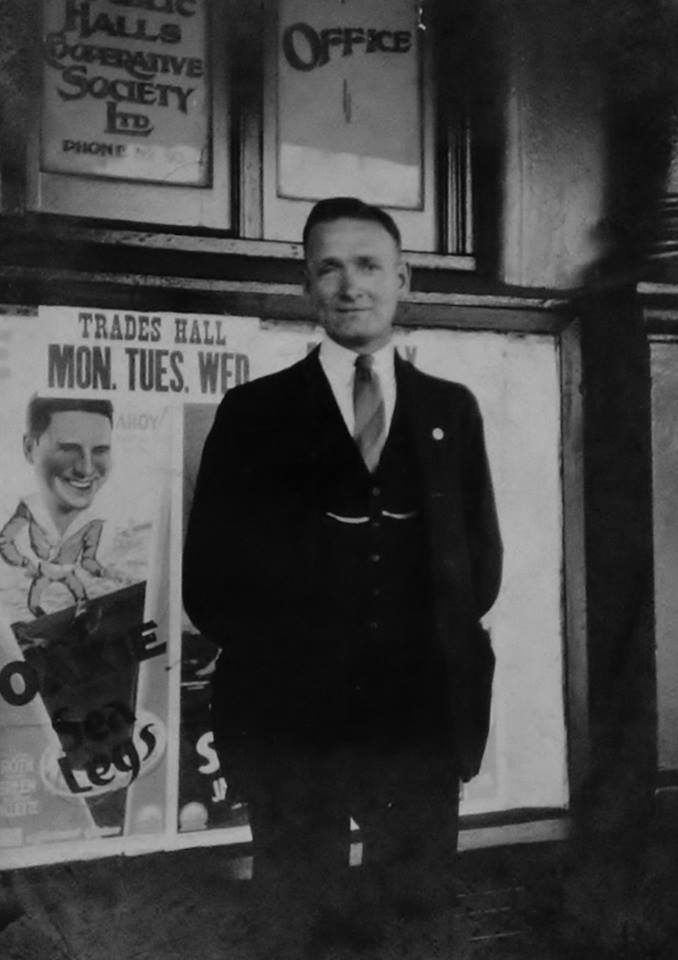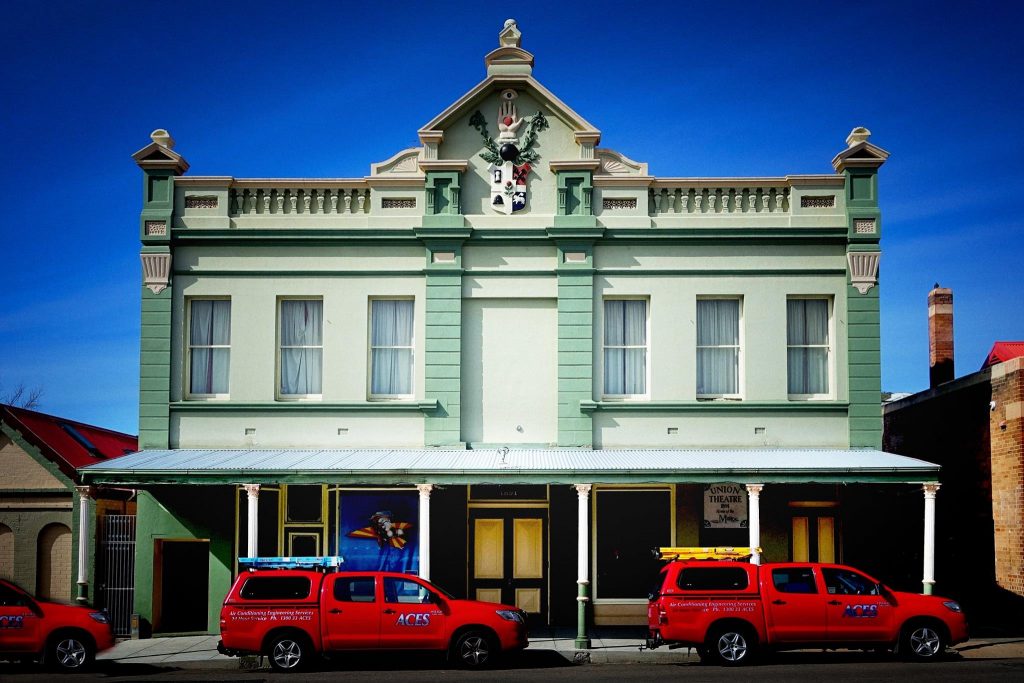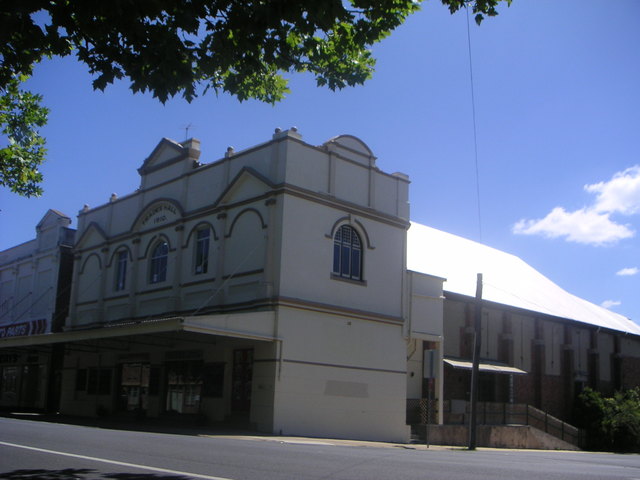LITHGOW TRADES HALL PICTURE PALACE OPENED
The Trades Hall in Lithgow was built on a successful history of labour organisation and although a picture palace may seem frivolous, there is no better demonstration of the way political activity cut across social life in Lithgow.
The origins of Trades Hall lay in the Eight Hour Day movement, which had begun in 1889 through the work of Richard Northey, John Summons and William Slattery. A procession, on 22 October 1900 marked the possibility of the Eight Hour Day becoming law. It was so successful that £150 were raised from an art union and was set aside for a Trades Hall. By 1904 the committee began to consider building and bought a block on Railway Parade from William Sandford, at what was considered a generously low price. On 10 October 1910 Senator G.F. Pearce, Minister for Defence, laid the foundation stone.
On 27 January 1912 the ‘Grand Opening of the Lithgow Trades Hall Picture Palace’ took place. As the Trades Hall Commonwealth Jubilee booklet describes it:
“The programme for the evening was described as a ‘gorgeous entertainment’ and consisted of ‘Mobsman,’ ‘Squaw’s Love,’ ‘Jones’ Ferry’ (cowboy comedy), and ‘Second Honeymoon’ (comedy drama). Mr. A.E. Scanlan was in charge of the plant, and the music was supplied by Miss Nellie Jones L.L.C.M. (piano) and Miss L. Hay (violin). A ‘baby grand’ piano had been purchased for £160; 580 comfortable chairs were fixed in position and forms with backs were obtained. Admission prices were: 6d. 1/- and 1/6.”
Grand as the opening sounds, it must be said that the Picture Palace was not the only show in town on 27 June 1912. On the same night the Lithgow Premierscope Company was showing at the Oddfellows Hall and West’s Pictures featured at the Colosseum on Tank Street.
The Lithgow Trades Hall Society quickly expanded. It secured the right to screen Fox Bros.’ films in 1918 and bought Oddfellows’ Hall from fellow labour lodges, renaming it to Union Theatre. It too was a picture house, with substantial refreshment rooms. Land adjoining the Trades Hall was acquired and Richard Northey laid the foundation stone for office buildings on 9 June 1926. The Centenary pamphlet said the new building housed ‘practically all the industrial unions in Lithgow’, which, in the 1950s meant 24 separate unions ‘and thus we find the objective of the pioneers of 1889 has now attained fulfilment.’

This is the interior of the Trades Hall Picture Palace after the 1947 remodelling.
State Library of NSW,
In 1939 the committee began remodelling the interior of Trades Hall but the war put a stop to the project. Work was finally completed in 1947, and was ‘the latest in theatre interior construction.’ The picture palace is now used as the premises for several local businesses, but the Union Theatre has recently been restored and remains a venue for entertainment.
Excerpt taken from History Avenue
SOURCES:
A.S. Luchetti, Iris Paradaens, Allan Cargill, The Oil Shale Industry: Experience in the Western Coalfields of NSW, Lithgow District Historical Society, 1979
The Trades Hall Council had a central role in representing all union interests in Lithgow and provided a focus for the town’s recreational activities.

It had union offices, two theatres, the Union Theatre and the Trades Hall Theatre, as well as local meeting rooms.






